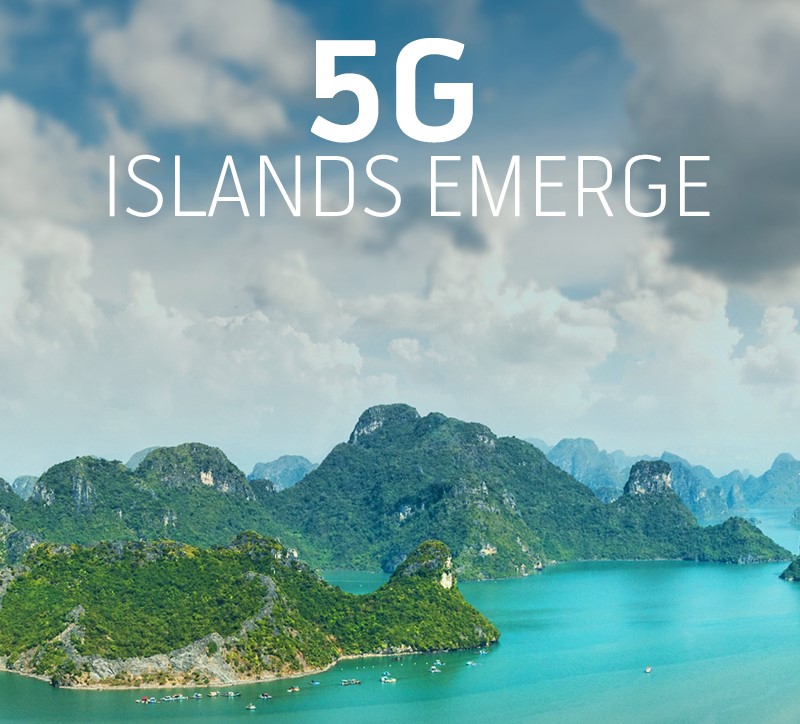
After a breakneck year of tech world advancements, setbacks and successes, Telenor Group’s research arm, Telenor Research, identifies seven tech trends to study up on for 2019. While there is no shortage of staggering high-tech feats identified for the year, the notion of “responsibility” resonates through many of this year’s trends.
“The world of technology is constantly on the go. With exciting innovation – which we point to this year in greater scale than ever – comes the need for reflection, pragmatism and perspective. We think that the tech pendulum is swinging in that direction in 2019. People are taking a step back and assessing ‘what do these deeper developments in technology and connectivity mean to me, to my family, my community?’” reflects Bjørn Taale Sandberg, Head of Telenor Research.
“In the end, we all want the assurance that technology – no matter how many steps ahead of us it might seem – can fit into our lives safely, sensibly and positively,” he added. Here are the seven tech trends we see making a big impact in 2019:
DEEPFAKE: TOO GOOD TO BE TRUE?
Masks, shades and filters have been all the rage on social media and messaging apps. The iPhone X took the idea further with facial recognition, but as the technology makes even more advances, why stop there? Remember Tom Cruise’s masks in Mission Impossible? Well, doing this in cyberspace is no longer “mission impossible”. It’s made very much possible by something the tech world has coined “
2019 will bring us more
algorithms that will enable the creation of
Telenor Researchdeepfake
content so advanced that we could have a difficult time differentiating between what’s real and what’s fake
The world’s largest democracy, India, will hold general elections in 2019, while the world’s second largest democracy, the US, will begin the lead up to its 2020 presidential campaign. These elections are likely to trigger the production of sophisticated deepfake content made to manipulate and misinform the public. The good news is that they could also trigger intensified development of media forensic tools and techniques to safeguard democratic processes. 2019 will see internet service providers, operators and regulators look seriously into mitigating deepfake content, and widespread public awareness campaigns against deepfake.
AN EYE ON AI
In 2017, Telenor Research predicted that AI ethics would one day be up for discussion. That time has come. The fact that AI will impact nearly every industry and society at large is no longer questionable. As people increasingly tune in to how technology affects their lives, AI is one of those technologies that will receive more public scrutiny in 2019. In the coming year, we will see public and private bodies setting AI governance frameworks and adopting new codes of conduct to ensure that they operate with high ethical standards. This will be done in order to ensure that AI systems are non-discriminatory, transparent, traceable and
The fact that AI will impact nearly every industry and society at large is no longer questionable.
Telenor Research
“High ethical scrutiny may inhibit innovation,” some might say, and in the absence of such oversight, most thriving AI ecosystems in the US and China might be able to grow and innovate faster than more regulated regions, such as Europe. Yet, we see AI governance as vital to sustainable innovation, uptake and acceleration of AI in business. In the end, these autonomous systems need to solve problems for people in a secure, robust and reliable way; proactive monitoring and governance structures for ethical use of AI will aim to ensure that.
5G ISLANDS EMERGE
In 2017, it was all about 5G testing: could a computer a few meters away connect to a signal station running a 5G frequency. In 2018, we saw pioneering uses of 5G –
Though 2020 is the year that 5G’s global standard will release, 2019 will see commercial advances in 5G, which we see in the United States and areas of Asia already. We’ll also see some of the first marketing campaigns based on 5G. From the first self-driving, 5G-steered buses to automated fisheries, from 5G-driven TV and fixed broadband to potential applications of 5G-powered remote surgery – the 5G floodgates will open in 2019, paving the way for commercial services to hit the market in 2020.
INDUSTRIAL AGE 2.0?
We think 2019 will be the year when industrial IoT customers crack the transition from
On the backend, it is becoming clearer how different connectivity technologies serve different use cases. Examples include LTE networks for CCTV and automotive, which are already widespread; LTE-M for logistics; NB-IoT for metering – and many more use cases for each. Though the question on which IoT technologies will scale furthest and fastest remains, one thing is clear – LPWA IoT networks will get more than their share of the spotlight in 2019 and beyond.
CHATBOTS JOIN THE FAMILY
The sobering reality of how hard it’s been to work with text-based chatbots has killed a lot of large-scale attempts. We see voice-activated chatbots doing better in 2019 – mainly in household devices. They aren’t the most clever systems yet, but as they advance, we can expect more
SCREENING SCREEN TIME, FLIPPING TO FLIP PHONES
Awareness of screen time and its effects on us is becoming widespread. Following some early movers, people will increasingly use screen time-tracking apps, night-time and do-not-disturb modes on phones, as developers tune the smartphone experience to enable us to manage our use of these devices. Developments in the marketplace as a result of increased screen time awareness and discipline will snowball in 2019.
Beyond new apps and software, we could see more stringent limits on screen time in various social and professional settings. Mobile-free meals with family and friends, and mobile-free meetings are certainly becoming more common. Whatever the case, this latest burst of screen time products and campaigns by private industry go a long way to raise awareness.
Moreover, people concerned with their own personal screen time but don’t want to disconnect altogether could opt for simpler connectivity. We could see this in the form of wearables, other small connected devices and even flip phones.
GREENTECH CATCHES FIRE
A virtuous cycle in green consumption, awareness and green tech development will take shape in 2019, given a boost in large part by mobile technology. The UN’s Intergovernmental Panel on Climate Change’s late 2018 report came as a wake-up call to those not already paying attention. As climate change worries and awareness of consumption both skyrocket in society, a wave of mobile-driven green technology will help people live and consume more smartly than ever. In 2019, this wave will reach its
Oslo is becoming a bellwether of greentech’s ability to reach scale. The increasing popularity of products and services like Too Good To Go, which cuts down on food waste, car-sharing platforms, bicycle-only food delivery services, Tesla and electric cars (close to 30 percent of new cars in Norway are electric in 2018) prove that consumers are highly receptive to greentech, if not outright demanding it. And aggressive disincentives –taxes and tolls on environmentally unfriendly transport and consumption provide the knock-out punch to environmental apathy in Norway. On a holistic level, credit goes to government policies, developer enthusiasm for greentech, consumer receptivity and social pressure; four effective cogs churning out greener tech and greener habits – in Norway and beyond in 2019.
This article was contributed by Telenor Research. If you have an article or opinion that you would like to contribute for the benefit everyone, share it with us here.
Footnotes:
[1] Generative adversarial networks are a class of artificial intelligence algorithms used in unsupervised learning.
[2] The European Commission plans to release ethical guidelines of AI in mid-2019, with the ambition to create a global standard for ethical AI. We expect to see recommendations on implementation of Trusted AI in business and on red lines of AI that are subject to strict ethical rules about what should not happen on the European territory (including but not limited to lethal autonomous weapon systems, normative credit scoring, artificial moral agents and similar).
[3] Low-power wide-area (LPWA) technology allows connected devices such as sensors, meters or even things like shipping containers to communicate over large geographical areas at a low bit rate.








